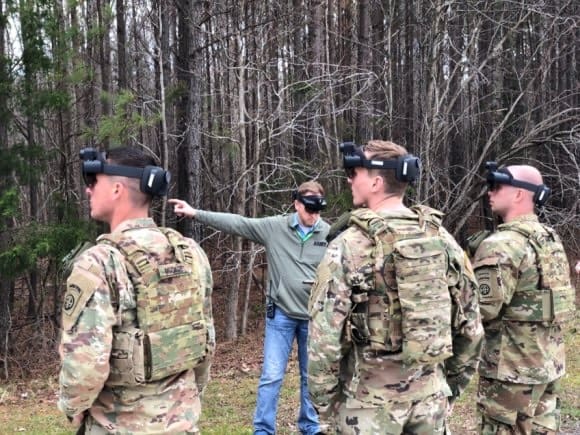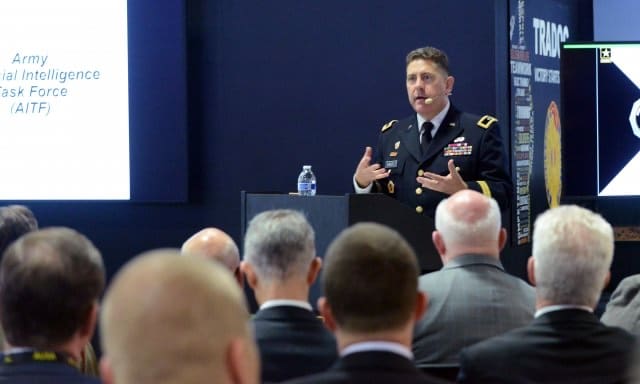WASHINGTON — The Army is now testing virtual-reality goggles that will allow Soldiers to rehearse combat missions that they are about to undertake.
The Integrated Visual Augmentation System, known as IVAS, will be tested by 82nd Airborne Division troops next month at Fort Pickett, Virginia. The IVAS goggles will allow Soldiers to see simulated images superimposed over the actual terrain.

The Soldiers will wear the goggles and miniature computer equipment as they negotiate obstacle courses, run land navigation and conduct other missions, said officials from Program Executive Office Soldier.
Called Soldier Touchpoint 2, the test is designed to provide feedback to PEO Soldier so the IVAS heads-up display can be further enhanced before 200,000 of the headsets begin to be fielded in 2021.
IVAS has been touted by senior leaders as a “game-changer” for Soldier lethality and a quick win for the modernization priority.
The IVAS headsets are a good example of how artificial intelligence is being used to enhance Soldier lethality, said Brig. Gen. Matthew Easley, director of the Army’s AI Task Force.

Each pair of IVAS goggles has “significant amounts of high-tech sensors onboard and processors,” Easley said at a Warriors Corner presentation Monday afternoon during the Association of the U.S. Army Annual Meeting and Exposition.
Each IVAS headset has integrated AI chips built into the system, he said.
“Those chips are doing visual recognition,” he said. “They’re tracking a Soldier’s eye movements, they’re tracking a Soldier’s hand as it interfaces with the system, and they’re tracking a Soldier’s voice.”
The IVAS headset “uses a customized AI piece” to make it work, he said.

AI will be an enabler for all of the Army’s modernization programs over the next decade, Easley said.
“Each one of those systems need AI,” he said, from Future Vertical Lift to Long-Range Precision Fires to the Next Generation Combat Vehicle.
“AI, as you know, is becoming a pervasive part of our society,” he said.
“Every system that you can think of — from self-driverless cars to ride-sharing applications, to restaurant recommendation systems to healthcare systems — they span every area of our society.
“They need to span every battlefield system that we have,” as well, he said, from maneuver to fire control.
By Gary Sheftick, Army News Service

